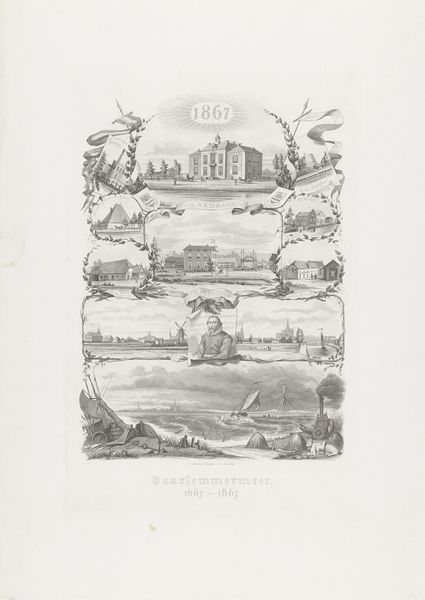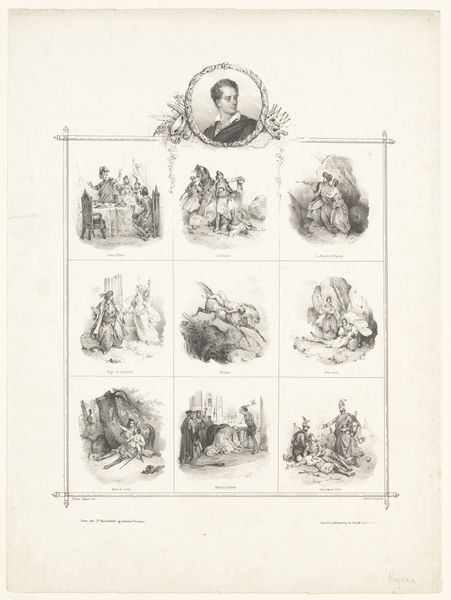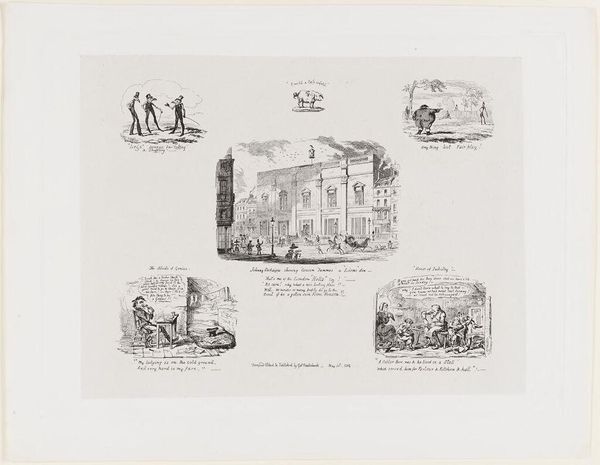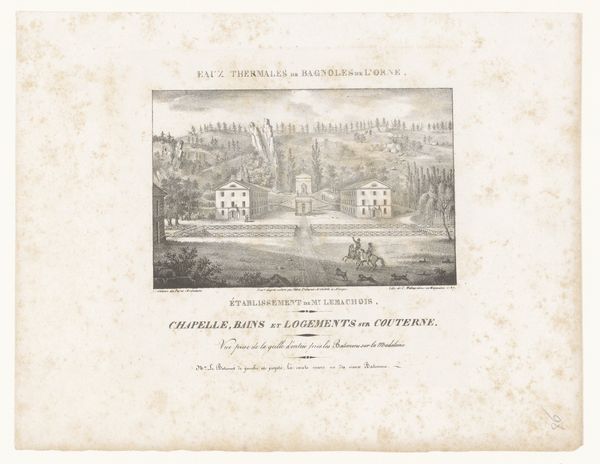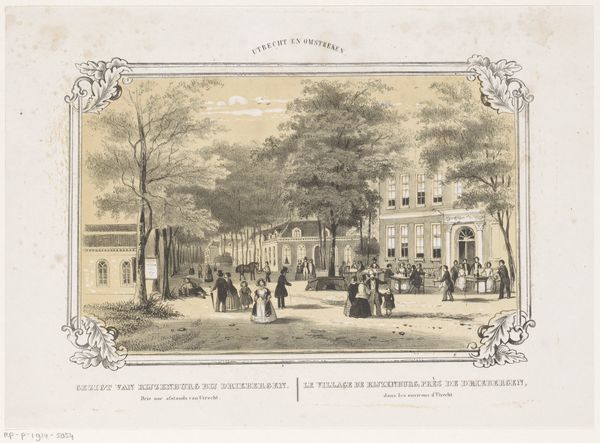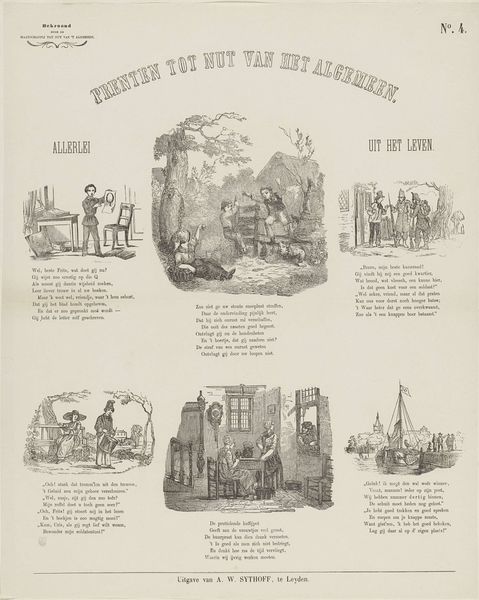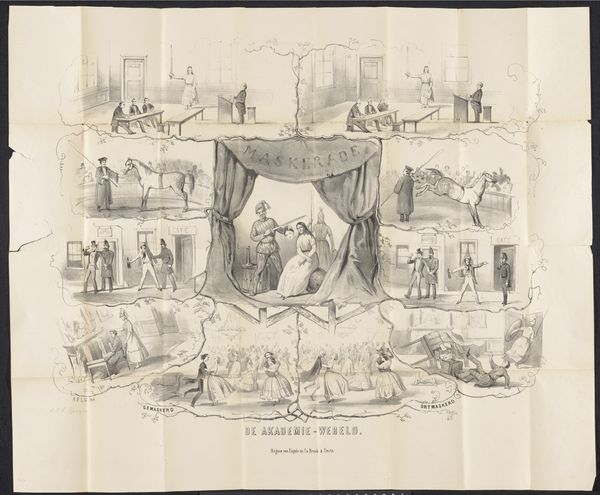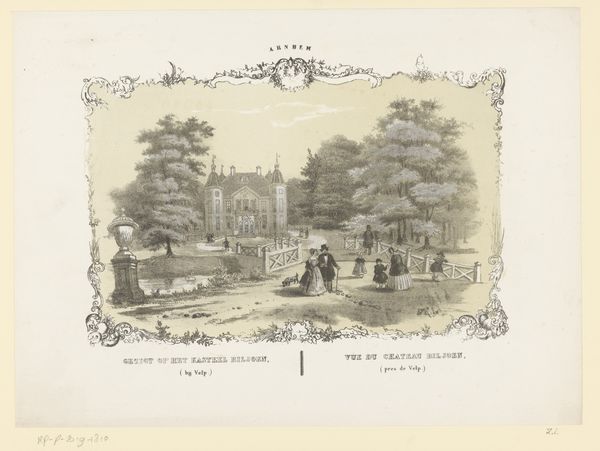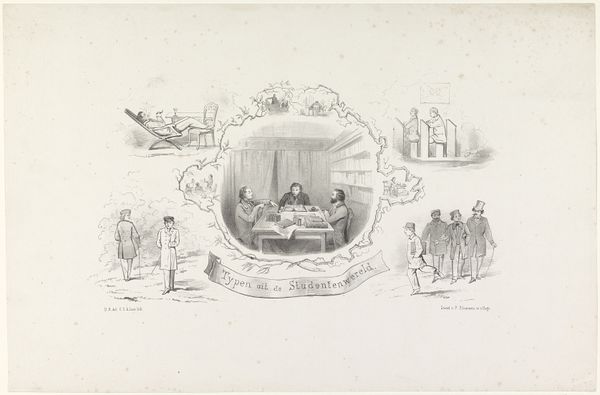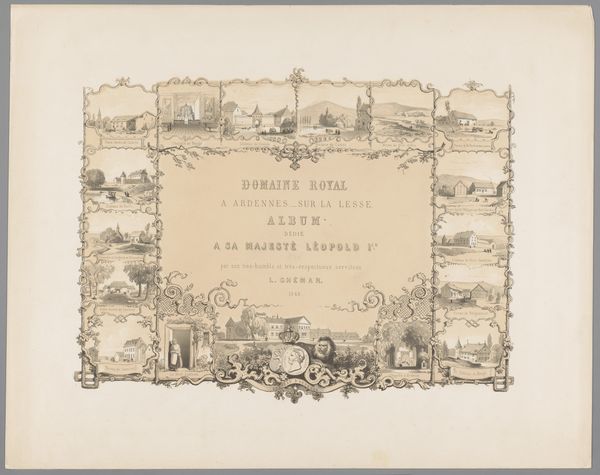
Portret van Otto Gerhard Heldring en door hem opgerichte gestichten 1848 - 1863
0:00
0:00
print, engraving
#
portrait
# print
#
landscape
#
genre-painting
#
academic-art
#
engraving
Dimensions: height 274 mm, width 364 mm
Copyright: Rijks Museum: Open Domain
Curator: Here we have "Portret van Otto Gerhard Heldring en door hem opgerichte gestichten," dating from 1848 to 1863. Gerrit Jan Thieme created this work, a compelling example of 19th-century printmaking. It is composed as an engraving. Editor: It has an aura of somber self-importance. The symmetrical layout, the dark rendering of the portrait at its center, and surrounding landscapes evoke a sense of order and…patriarchal power. Curator: Power definitely factors in, thinking of the engraving process itself – the skilled labor and time involved in meticulously carving the image onto a metal plate. And the paper; its quality reflecting the economics of print production. The fact it's a print also means its was accessible for dissemination, so considering notions of accessibility, reproduction and craft is important here. Editor: Precisely. And the imagery too: Heldring, a central figure, is flanked by depictions of his charitable institutions. I’m interested in examining the cultural dynamics embedded in philanthropy during this period: notions of noblesse oblige, class disparities, and the role of institutions in shaping social behavior. Who benefits, who doesn’t? And how does this representation serve to legitimize a particular social order? Curator: Good points. And the landscape depictions also imply a kind of property ownership and control over space, framing him in terms of environmental and also economic power, by his dominion of land and assets. What were the circumstances and material conditions that enabled the construction and maintenance of those buildings? Editor: Exactly, let’s also contextualize Thieme himself, working within the academic art traditions of the time – think about his training, the aesthetic conventions that shape his hand. How much did this artist have agency and did it fit the criteria demanded in this academic form, how might this shape the artist’s hand? Curator: And ultimately, the end result – an easily reproducible image, one that serves as both a portrait and a symbolic advertisement for Heldring’s philanthropy and power and influence, given that engravings allowed for wider audiences. The mode of communication enabled through material process and choices has shaped my perception. Editor: So, an image that on the surface might appear as a simple portrait actually invites layered explorations into societal structure. Its interesting to consider that at this stage of print and artistic conventions its function isn't purely just to immortalize but actively advocate, too.
Comments
No comments
Be the first to comment and join the conversation on the ultimate creative platform.

